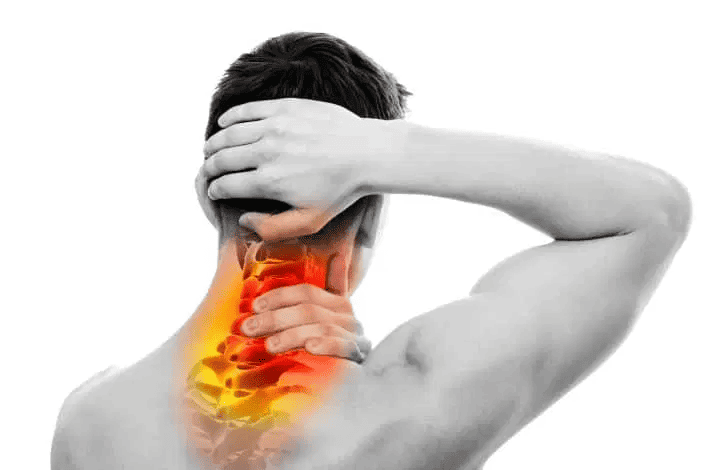In our digital age, smartphones have become an integral part of our lives, but constant use can come at a cost. “Text neck,” a term used to describe neck pain and damage sustained from looking down at mobile devices frequently, is on the rise. This condition not only causes discomfort but can also lead to chronic pain and long-term issues. In this blog, we’ll explore what text neck is, how it affects your neck’s anatomy, and most importantly, how integrated health care, specifically through physiotherapy, chiropractic care, and massage therapy, can provide effective solutions for those struggling with neck pain and its link to lower back pain due to phone use.
Understanding Text Neck: How Your Phone Habits Impact Your Neck
When you tilt your head forward to look at your phone or tablet, you increase the weight your neck has to support significantly. The average adult head weighs about 10-12 pounds in a neutral position. However, for every inch you tilt your head forward, the pressure on your spine doubles! This constant strain on the neck muscles and spine can lead to pain, stiffness, and muscle imbalances.
Moreover, the forward head posture associated with text neck leads to rounded shoulders and a slouched back. This, in turn, affects the natural curvature of your spine, leading to lower back pain. The spine is a delicate balance of curves designed to absorb and distribute the body’s weight evenly. When your head is constantly tilted forward, it disrupts this balance, putting additional stress on the lower back.
Alleviating Text Neck and Lower Back Pain through Integrated Health Care
- Physiotherapy:
- Physiotherapists can assess your posture and create a personalized exercise plan to strengthen weak muscles and stretch tight ones, focusing not only on the neck but also on the lower back.
- Techniques such as IMS (Intramuscular Stimulation) and manual therapy are used to alleviate muscle tension in both the neck and lower back.
- Chiropractic Care:
- Chiropractors can perform spinal adjustments to realign the spine, reducing pressure on both the neck and lower back, and improving overall posture.
- Shockwave therapy can be utilized to stimulate healing and reduce inflammation in affected areas.
- Massage Therapy:
- Registered Massage Therapists (RMTs) can employ techniques like deep tissue massage and pin and stretch to release tension in the neck, shoulders, and lower back.
- Swedish massage can improve blood circulation, promoting relaxation and reducing overall muscle tension.
Exercises to Alleviate Neck Pain
1. Neck Retraction Exercise:
This exercise helps improve neck posture and strengthens the muscles that support your neck.
Instructions:
- Sit or stand with your back straight.
- Gently tuck your chin towards your chest, keeping your head level.
- Hold this position for 5 seconds, feeling a slight stretch at the back of your neck.
- Slowly release and return to the starting position.
- Repeat this exercise 10 times.
2. Neck Side Stretch:
This stretch helps in relieving tension in the neck muscles and improves flexibility.
Instructions:
- Sit or stand with your back straight.
- Slowly tilt your head to the right, bringing your ear towards your shoulder until you feel a gentle stretch on the left side of your neck.
- Hold this position for 20-30 seconds, breathing deeply and relaxing your shoulders.
- Return your head to the center and repeat the stretch on the left side.
- Perform this stretch 2-3 times on each side.
3. Shoulder Blade Squeeze:
This exercise helps in strengthening the muscles between your shoulder blades, promoting better posture and reducing neck strain.
Instructions:
- Sit or stand with your back straight and shoulders relaxed.
- Squeeze your shoulder blades together as if you are trying to hold a pencil between them.
- Hold this position for 5 seconds, focusing on squeezing your shoulder blades tightly.
- Release and relax your shoulders.
- Repeat this exercise 15 times.
Additional Tips:
- Stay Hydrated: Proper hydration helps maintain the elasticity of your muscles, including those in your neck.
- Practice Good Posture: Be mindful of your posture, especially when sitting at a desk or using electronic devices. Sit up straight and avoid slouching.
- Take Regular Breaks: If you work on a computer or use your phone frequently, take short breaks every hour. Use these breaks to stretch and relax your neck and shoulders.
- Apply Heat or Ice: Applying a heating pad or ice pack to your neck for 15-20 minutes can help alleviate pain and reduce inflammation.
Incorporating these exercises into your daily routine, along with maintaining good posture and regular breaks from electronic devices, can significantly help in reducing neck pain and promoting overall neck health.
Check and see if your desk setup is affecting your neck and back!
Proper Desk Setup and Desk Stretches for Good Posture and Injury Prevention
Text neck not only causes discomfort in the neck but also has far-reaching effects, including lower back pain, due to the disruption of your spine’s natural alignment. Integrated health care, comprising physiotherapy, chiropractic care, and massage therapy, offers effective solutions to alleviate discomfort, correct muscle imbalances, and restore proper posture not only in the neck but also in the lower back. If you’re experiencing neck and lower back pain due to phone use in Langley, BC, our team of dedicated professionals is here to help. Don’t let text neck control your life—take the first step toward relief and improved well-being today.
Exercises for Lower Back Pain
Exercises for Lower Back Pain: Tips from a Langley Chiropractor



















